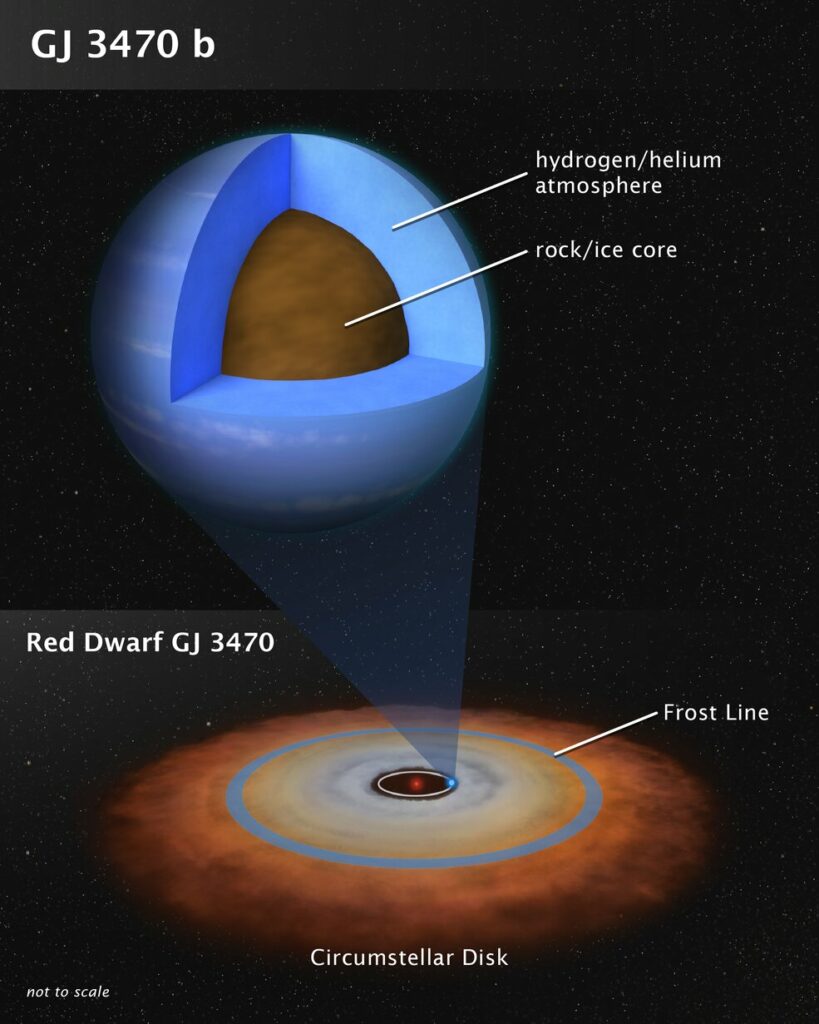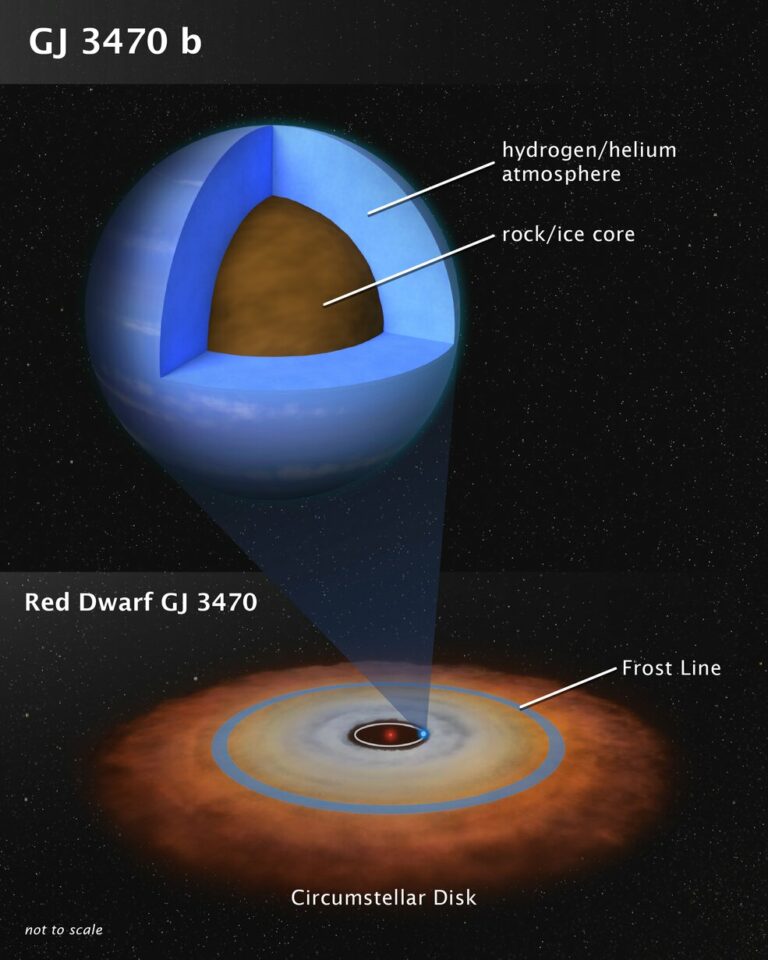Hubble and Spitzer Uncover Atmosphere of Medium-Sized Planet
Two NASA space telescopes have collaborated to identify, for the first time, the intricate chemical “fingerprint” of a planet that falls between the sizes of Earth and Neptune. While such planets are not present in our own solar system, they are quite common around other stars.The planet in question, Gliese 3470 b (also known as GJ 3470 b), appears to be a hybrid of Earth and Neptune, with a substantial rocky core concealed beneath a dense atmosphere composed of hydrogen and helium. Weighing in at 12.6 times the mass of Earth, this planet is more massive than our home planet but less massive than Neptune, which exceeds 17 times the mass of Earth.NASA’s Kepler space observatory, which concluded its mission in 2018, has discovered numerous similar worlds. In fact, it is estimated that 80% of the planets in our galaxy fall within this mass range. However, until now, astronomers have been unable to comprehend the chemical composition of such planets.
By analyzing the contents of GJ 3470 b’s atmosphere, astronomers can gather valuable insights into the planet’s characteristics and origins.

“This discovery holds significant implications for our understanding of planet formation. Despite its proximity to the star, this planet is much less massive than Jupiter, which is 318 times the mass of Earth. Yet, it has managed to accumulate a primordial hydrogen/helium atmosphere that is relatively devoid of heavier elements,” explained Björn Benneke of the University of Montreal, Canada. “This uniqueness is what makes it truly remarkable, as we have not encountered anything similar within our own solar system.”To conduct this groundbreaking study of GJ 3470 b’s atmosphere, astronomers utilized the combined multi-wavelength capabilities of NASA’s Hubble and Spitzer space telescopes.
The detection of the planet’s characteristics was achieved through the measurement of starlight absorption during the planet’s transit and the decrease in reflected light as it passed behind the star. In total, the space telescopes observed 12 transits and 20 eclipses. The scientific field that analyzes chemical fingerprints using light is known as “spectroscopy.”According to Benneke, “For the first time, we have identified a spectroscopic signature of such a planet.” However, he is uncertain about its classification. Should it be referred to as a “super-Earth” or “sub-Neptune”? Or perhaps it warrants a different designation altogether?
Fortunately, the atmosphere of GJ 3470 b turned out to be mostly clear, with only minimal hazes. This allowed the scientists to delve deep into its composition.
“We initially anticipated an atmosphere rich in heavier elements like oxygen and carbon, which would result in abundant water vapor and methane gas, similar to what we observe on Neptune,” explained Benneke. “Instead, we discovered an atmosphere that lacks heavy elements to such an extent that its composition resembles the hydrogen/helium-rich composition of the Sun.”Unlike other exoplanets known as “hot Jupiters,” which are believed to form far from their stars and gradually migrate closer, this planet appears to have formed in its current location, according to Benneke.
According to Benneke, the most plausible explanation is that GJ 3470 b was formed in close proximity to its red dwarf star, which is approximately half the mass of our Sun. He suggests that initially, the planet was a dry rock and then rapidly accumulated hydrogen from a primordial gas disk when its star was in its early stages. This disk is referred to as a “protoplanetary disk.”
Benneke states, “We are observing an object that was able to gather hydrogen from the protoplanetary disk without transforming into a hot Jupiter. This is a fascinating scenario.”One possibility is that the disk dissipated before the planet could continue growing. Benneke explains, “The planet remained as a sub-Neptune.”
NASA’s upcoming James Webb Space Telescope will have the capability to explore GJ 3470 b’s atmosphere in greater detail, thanks to its exceptional sensitivity in the infrared spectrum. These new findings have already generated significant interest among American and Canadian teams involved in developing instruments for the Webb. They will study the transits and eclipses of GJ 3470 b at wavelengths where the atmospheric hazes become increasingly transparent.
This article is republished from PhysORG under a Creative Commons license. Read the original article.
Do not forget to share your opinion with us to provide you with the best posts !




0 Comments